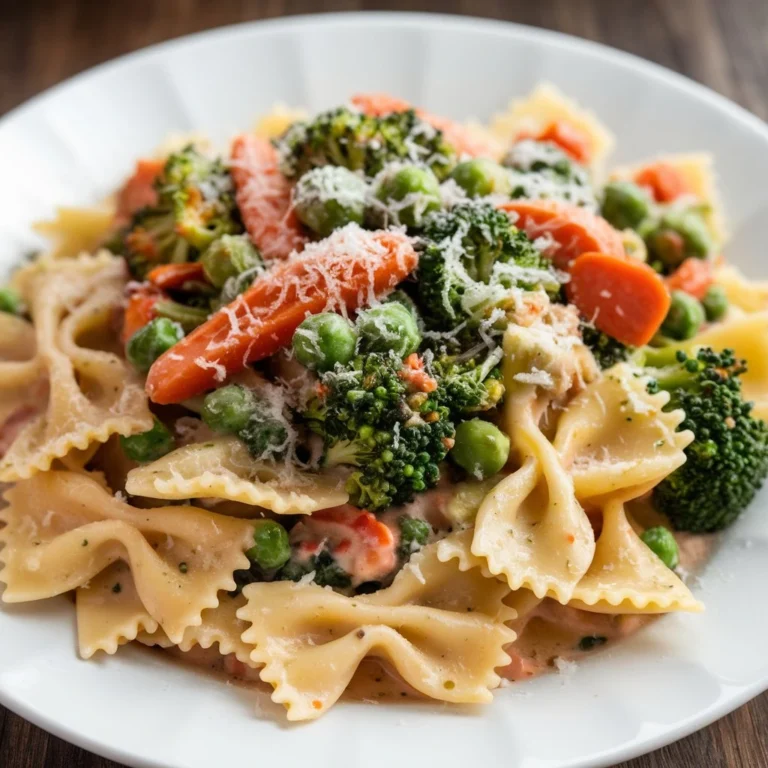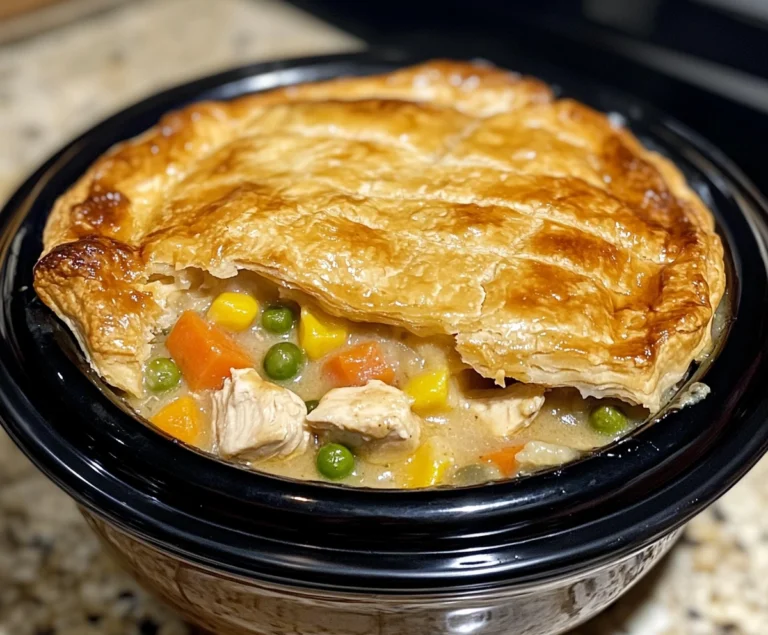How to Chicken Parmesan Cream Sauce?
Achieving the perfect texture for Chicken parmesan cream sauce? can elevate your cooking to new heights. This versatile, creamy sauce is a staple in Italian cuisine, and its smooth, velvety consistency is what makes it so appealing. Whether you’re preparing pasta, chicken, or vegetables, a thick and creamy parmesan sauce can add richness and flavor to any dish. However, getting the sauce just right is not always easy.
In this in-depth guide, we will explore various techniques for Chickening parmesan cream sauce, explain common mistakes and how to avoid them, and discuss different methods suited for various dietary needs. We’ll also provide tips for enhancing the flavor of your sauce while maintaining the ideal texture, ensuring your dish is both delicious and visually appealing.
By the end of this guide, you’ll have all the tools necessary to create the perfect parmesan cream sauce for any meal.
The Importance of Sauce Consistency
The consistency of your parmesan cream sauce can make or break a dish. A sauce that’s too thin won’t stick to the pasta or meat properly, while a sauce that’s too thick can overpower the dish. Achieving the right balance ensures the sauce complements your dish perfectly, providing richness without being overwhelming.
The ideal parmesan cream sauce should be thick enough to coat the back of a spoon without running off too quickly. This ensures that every bite of your pasta or protein is coated in creamy, cheesy goodness.
Beyond texture, the consistency of the sauce also plays a significant role in how the flavors come through. A thick sauce allows the parmesan and other ingredients to meld together, creating a rich, harmonious taste. On the other hand, a runny sauce can dilute these flavors, resulting in a less impactful dish.
Now, let’s explore the best methods for achieving the perfect sauce consistency.
Methods to Thicken Parmesan Cream Sauce
There are several methods to Chicken a cream sauce, each with its own unique advantages. Whether you’re looking for a quick fix or want to enhance the texture without altering the flavor, there’s a method to suit your needs.
1. Reduce the Sauce by Simmering
One of the simplest and most effective ways to thicken parmesan cream sauce is to reduce it by simmering. This method involves cooking the sauce over low heat, allowing the water content to evaporate, which naturally thickens the sauce.
Step-by-Step Guide to Reducing a Sauce:
- Step 1: Pour your sauce into a wide saucepan. The more surface area the sauce has, the quicker it will reduce.
- Step 2: Set your stove to medium heat and bring the sauce to a gentle simmer. Avoid boiling the sauce, as this can cause the dairy to separate, leading to a grainy texture.
- Step 3: Stir the sauce frequently to prevent it from sticking to the bottom of the pan and burning.
- Step 4: Allow the sauce to simmer for 10-30 minutes, depending on the desired thickness. The longer you simmer, the thicker the sauce will become.
- Step 5: Once the sauce has thickened to your liking, remove it from the heat and serve immediately.
Why Simmering Works:
Reducing the sauce is a great way to thicken it without adding any additional ingredients. As the water evaporates, the fat and protein molecules become more concentrated, creating a naturally thicker sauce. This method also intensifies the flavor of the parmesan, making your sauce even more delicious.
For more detailed tips on reducing sauces, check out this helpful guide on garlic parmesan chicken pasta, which explores how reductions enhance flavor and texture.
2. Chickening with a Roux (Butter and Flour)

A roux is a mixture of butter and flour cooked together to form a paste. It’s a classic French technique used to thicken sauces without altering the flavor. When added to parmesan cream sauce, a roux can create a smooth, silky texture.
Step-by-Step Guide to Using a Roux:
- Step 1: In a separate saucepan, melt 2 tablespoons of butter over medium heat.
- Step 2: Once the butter has melted, add 2 tablespoons of all-purpose flour to the pan. Whisk the mixture continuously to avoid lumps.
- Step 3: Continue whisking the flour and butter together for about 1-2 minutes, until the mixture turns a pale golden color.
- Step 4: Slowly whisk the roux into your parmesan cream sauce, stirring constantly. The sauce will begin to thicken as the roux is incorporated.
- Step 5: Cook for an additional 5-7 minutes to ensure the flour is fully cooked and the sauce has reached the desired consistency.
Why Roux Works:
A roux works by absorbing excess liquid in the sauce, creating a thicker texture without affecting the flavor. The butter in the roux adds richness, while the flour provides structure, ensuring your sauce stays smooth and creamy.
This technique is especially effective in dishes where you want a luxurious, velvety finish, like in chicken pasta with basil, lemon, and garlic.
3. Cornstarch or Flour Slurry
If you’re short on time, using a slurry is a quick and easy way to thicken your sauce. A slurry is made by mixing cornstarch or flour with cold water and then adding it to the sauce. This method is ideal for last-minute thickening, as it works almost instantly.
Step-by-Step Guide to Using a Slurry:
- Step 1: In a small bowl, combine 1 tablespoon of cornstarch or flour with 2 tablespoons of cold water. Stir until the mixture is smooth and free of lumps.
- Step 2: Gradually whisk the slurry into your simmering parmesan cream sauce, one spoonful at a time.
- Step 3: Continue cooking the sauce over medium heat for 2-3 minutes, until the sauce thickens. Be careful not to add too much slurry at once, as it can cause the sauce to become too thick.
- Step 4: Once the sauce has reached your desired consistency, remove it from the heat and serve.
Why Slurries Work:
Cornstarch and flour are both excellent thickeners because they form a gel when mixed with liquid. When added to a hot sauce, this gel expands and thickens the sauce almost immediately. Slurries are especially useful for quick fixes when your sauce is too thin and you need a solution fast.
4. Egg Yolks for Creaminess
Egg yolks are another effective thickening agent, particularly when you want to add richness to your sauce. When tempered properly, egg yolks create a luxurious, creamy texture without altering the flavor of the sauce.
Step-by-Step Guide to Using Egg Yolks:
- Step 1: In a small bowl, whisk one or two egg yolks.
- Step 2: Slowly add a spoonful of your hot sauce to the egg yolks while whisking constantly. This process is called tempering and prevents the yolks from scrambling.
- Step 3: Once the yolks are tempered, gradually whisk them back into the sauce, stirring constantly.
- Step 4: Continue cooking the sauce over low heat for 2-3 minutes, until the sauce thickens.
Why Egg Yolks Work:
Egg yolks are naturally high in fat and protein, which helps them bind with the liquid in the sauce to create a thicker, creamier texture. They also add richness and depth of flavor, making your sauce even more indulgent.
This method is often used in carbonara and other creamy pasta dishes where a silky texture is essential.
5. Beurre Manié (Kneaded Butter)
Beurre manié is a French technique that involves mixing butter and flour into a paste and then using it to thicken sauces. Unlike a roux, which is cooked before being added to the sauce, beurre manié is mixed directly into the sauce and melts as it cooks.
Step-by-Step Guide to Using Beurre Manié:
- Step 1: In a small bowl, combine equal parts softened butter and flour. Mix until the ingredients form a smooth paste.
- Step 2: Roll the paste into small balls.
- Step 3: Drop the balls into your simmering sauce, whisking constantly until the beurre manié dissolves and the sauce thickens.
- Step 4: Continue cooking the sauce for an additional 3-5 minutes to ensure the flour is fully incorporated.
Why Beurre Manié Works:
The butter in beurre manié melts into the sauce, while the flour absorbs the liquid, creating a thick, smooth texture. This method is ideal for sauces that need a final thickening touch just before serving.
For more sauce techniques, including the use of beurre manié, check out this comprehensive guide to lemon cream sauce.
Additional Techniques for Thickening Parmesan Cream Sauce
Beyond the standard methods of simmering, roux, slurry, egg yolks, and beurre manié, there are other ways to thicken parmesan cream sauce depending on your dietary preferences and available ingredients.
1. Using More Cheese
Adding more parmesan cheese can naturally thicken the sauce while enhancing its flavor. Parmesan contains proteins and fats that bind with the liquids in the sauce, creating a thicker consistency.
- Step 1: Grate fresh parmesan cheese and gradually stir it into your sauce over low heat.
- Step 2: Continue stirring until the cheese melts completely and the sauce thickens to your liking.
This method works well when you want to maintain the cheesy flavor without adding additional ingredients.
2. Cream or Milk Reduction
If your sauce is too thin, you can reduce the liquid content by adding heavy cream or milk. This method not only thickens the sauce but also adds a rich, creamy flavor.
- Step 1: Slowly pour in ½ cup of heavy cream or whole milk while whisking.
- Step 2: Simmer the sauce for an additional 10-15 minutes, allowing the liquid to reduce and the sauce to thicken.
3. Using Potato Starch or Arrowroot Powder
For those looking for gluten-free options, potato starch or arrowroot powder can be used as thickeners. These powders work similarly to cornstarch, creating a gel that thickens the sauce without altering its flavor.
- Step 1: In a small bowl, mix 1 tablespoon of potato starch or arrowroot powder with 2 tablespoons of cold water.
- Step 2: Slowly whisk the mixture into your sauce, cooking for an additional 2-3 minutes until the sauce thickens.
Avoiding Common Mistakes When Thickening Parmesan Cream Sauce
While the methods outlined above are generally foolproof, there are a few common mistakes to watch out for when thickening parmesan cream sauce:
1. Over-Thickening the Sauce
It’s easy to go overboard when adding thickeners like roux or slurry. If you add too much, your sauce can become overly thick and gluey. To avoid this, always add thickeners gradually, giving the sauce time to thicken before adding more.
2. Letting the Sauce Boil
Boiling the sauce can cause the dairy to separate, resulting in a curdled texture. Always keep the sauce at a gentle simmer and stir frequently to prevent it from reaching a boil.
3. Not Stirring Enough
Consistent stirring is key when thickening sauces. If you don’t stir often enough, the sauce can stick to the bottom of the pan and burn, or the thickener can clump, leaving you with a lumpy sauce.
Tips for Enhancing Flavor While Thickening
As you thicken your parmesan cream sauce, you may notice that the flavors become more concentrated. While this can enhance the cheesy richness, it’s important to balance the flavors so that the sauce doesn’t become too overpowering.
1. Use Fresh Parmesan
Freshly grated parmesan cheese melts more smoothly and has a stronger flavor than pre-grated cheese. It also helps thicken the sauce more effectively.
2. Add Herbs and Spices
To balance out the richness of the sauce, consider adding herbs like basil, thyme, or parsley, or spices like black pepper and nutmeg. These additions can enhance the flavor without altering the texture.
3. Incorporate Broth for Depth
If you want to thin out the sauce slightly while still adding flavor, try incorporating a small amount of chicken or vegetable broth. This can help balance the richness of the cream and parmesan while adding depth to the sauce.
Substitutions for Dietary Preferences
Not everyone can enjoy traditional cream sauces, but that doesn’t mean you have to miss out on the creamy goodness of parmesan sauce. Here are some substitutions for common dietary needs:
1. Dairy-Free Parmesan Cream Sauce
For a dairy-free version of parmesan cream sauce, substitute the cream with coconut cream or cashew cream, and use vegan parmesan cheese. These alternatives can still provide a creamy texture without the use of dairy.
2. Gluten-Free Options
If you’re avoiding gluten, you can thicken your sauce with cornstarch, arrowroot powder, or potato starch instead of flour. These gluten-free thickeners work just as well and won’t affect the flavor of your sauce.
3. Low-Fat Options
For a lighter version of the sauce, use whole milk instead of cream and reduce the amount of butter in the recipe. You can also substitute Greek yogurt for some of the cream, which will add creaminess without the extra fat.
Frequently Asked Questions (FAQs)
How can I fix a sauce that’s too thick?
If your sauce becomes too thick, simply thin it out by adding a little milk, cream, or pasta water. Gradually whisk in the liquid until the sauce reaches the desired consistency.
What’s the best gluten-free thickening method?
If you need to thicken your sauce without gluten, cornstarch or arrowroot powder are excellent options. Simply mix with cold water and whisk into the sauce.
Can I thicken the sauce without flour?
Yes, you can use cornstarch, egg yolks, or even more parmesan cheese to thicken the sauce without flour. These alternatives provide a thick, creamy texture without adding any additional flavor.
Final Thoughts
Thickening parmesan cream sauce is an art that, once mastered, can elevate your cooking to the next level. Whether you’re using a classic roux, experimenting with egg yolks, or trying a quick slurry, the key is to be patient and attentive. Each method provides a slightly different result, but all will help you achieve that rich, velvety texture that makes parmesan cream sauce so irresistible.
By understanding the various techniques and avoiding common mistakes, you can create the perfect sauce for any occasion. Try out these methods in your favorite recipes, like shrimp garlic butter or a simple thin chicken breast, and see how a perfectly thickened sauce can enhance your culinary creations.







